PBS News: July 23-27, 2019, BBC Click: NASA Meets Big Brother and The Moon Landing 50 Years On, DW Documentary: The New Silk Road, Part 1 & 2: From China to Pakistan and From Kyrgyzstan to Duisburg, Todd William: Why Keep Spending Money on Space Exploration?, TED Talks: where did the moon come from a new theory and how playing instrument benefits your brain, Metabolism & Nutrition, Part 1: Crash Course A&P #36, Colossal: Two Collaborative Murals by Pat Perry and Local Schoolchildren Connect Communities in Iraq and Maine, Black Swallowtail Butterfly and Ing’s Garden: Captured by Ing-On Vibulbhan-Watts on Wednesday, July 24, 2019 at the Backyard Garden, Downtown Newark, New Jersey
July 27, 2019 – PBS NewsHour Weekend full episode
PBS NewsHour Published on Jul 27, 2019
On this edition for Saturday, July 27, a faceoff over the use of facial recognition technology in Great Britain, and how biometric data is being weaponized by protesters and police in Hong Kong. Also, an attempt to change the one-note narrative about Congo, and an exhibit in New York City celebrates street art. Hari Sreenivasan anchors from New York. Stream your PBS favorites with the PBS app: https://to.pbs.org/2Jb8twG Find more from PBS NewsHour at https://www.pbs.org/newshour Subscribe to our YouTube channel: https://bit.ly/2HfsCD6 Follow us: Facebook: https://www.pbs.org/newshour Twitter: https://www.twitter.com/newshour Instagram: https://www.instagram.com/newshour Snapchat: @pbsnews Subscribe: PBS NewsHour podcasts: https://www.pbs.org/newshour/podcasts Newsletters: https://www.pbs.org/newshour/subscribe
Category News & Politics
As bee populations decline, can technology help fill the gap?
PBS NewsHour Published on Jul 25, 2019
Humans rely heavily on pollinator bees to sustain food production globally. But for decades, the insects’ population has declined, in part because of pesticide use. If the die-off continues, it will have huge economic and public health consequences for people. William Brangham reports on groups that are working on innovative ways to save the world’s jeopardized bee population — or supplement it.
How violinist Gaelynn Lea is redefining who can be a musician
PBS NewsHour Published on Jul 26, 2019
Gaelynn Lea is transforming our cultural understanding of who can be a musician. A congenital disability called osteogenesis imperfecta caused her bones to break more than 40 times while she was in the womb. But the violinist is known for her haunting original songs, innovative interpretations of traditional folk music and growing role as an advocate for disability rights. Jeffrey Brown reports.
PBS NewsHour full episode July 26, 2019
PBS NewsHour Published on Jul 26, 2019
Friday on the NewsHour, election security is again in the forefront after Robert Mueller and a Senate intelligence report warn of the continued threat of Russian interference. Plus: Turmoil continues over national immigration policy, Poland’s democracy at risk, the 2020 campaign trail grows more contentious, analysis of political news with Mark Shields and David Brooks and a violin virtuoso. WATCH TODAY’S SEGMENTS: News Wrap: Economic growth slows in 2nd quarter https://www.youtube.com/watch?v=o33_A… House Democrats launch official impeachment investigation https://www.youtube.com/watch?v=ZIexl… How dated voting equipment exposes elections to interference https://www.youtube.com/watch?v=V2FZS… Immigration battles roil in Congress, courts and communities https://www.youtube.com/watch?v=1_Svi… Why Poland’s conservative government is causing the EU alarm https://www.youtube.com/watch?v=-OeNY… How 2020 Democrats are going after each other’s records https://www.youtube.com/watch?v=siSZK… Shields and Brooks on Mueller’s testimony, election security https://www.youtube.com/watch?v=hmtjO… How violinist Gaelynn Lea redefines who can be a musician https://www.youtube.com/watch?v=h5qQU…
PBS NewsHour full episode July 25, 2019
PBS NewsHour Published on Jul 25, 2019
Thursday on the NewsHour, Puerto Rico’s Gov. Ricardo Rossello finally announces his upcoming resignation after more than a week of protests. Plus: Democratic and Republican reaction to Robert Mueller’s congressional testimony, the Justice Department says it will resume enforcement of the death penalty, bees in danger, Rotterdam’s architecture and a brief but spectacular take on life on Earth. WATCH TODAY’S SEGMENTS: News Wrap: Trump slams court that blocked new asylum rules https://www.youtube.com/watch?v=eAqbk… Rossello resignation puts Puerto Rico at ‘critical juncture’ https://www.youtube.com/watch?v=Y4IL0… The 3 key points Rep. Jeffries took from Mueller’s testimony https://www.youtube.com/watch?v=JM5Di… How Rep. Collins interpreted what Mueller told Congress https://www.youtube.com/watch?v=lHDik… Federal executions to resume, despite falling public support https://www.youtube.com/watch?v=6Ap7d… As bees continue to die, can technology help fill the gap? https://www.youtube.com/watch?v=ky6AL… How Rotterdam fosters a spirit of architectural exploration https://www.youtube.com/watch?v=BmUNt… What inspired this biologist to study Earth’s creatures https://www.youtube.com/watch?v=DI5WS…
PBS NewsHour full episode July 24, 2019
PBS NewsHour Published on Jul 24, 2019
Wednesday on the NewsHour, former special counsel Robert Mueller testifies before two House committees about Russian interference in the 2016 presidential election and possible obstruction by President Trump in the investigation that ensued. Plus: Legal experts and congressional representatives from both parties analyze the Mueller hearings and the latest on the political chaos in Puerto Rico. WATCH TODAY’S SEGMENTS: Partisan divide fuels Mueller hearings on a historic day https://www.youtube.com/watch?v=P9L_f… What Trump and lawmakers are saying about Mueller testimony https://www.youtube.com/watch?v=ehcU8… 2 former DOJ officials on takeaways from Mueller’s testimony https://www.youtube.com/watch?v=Lgy69… ‘Not many surprises’ in Mueller hearings, says Rep. Johnson https://www.youtube.com/watch?v=FeLMN… What worries Rep. Demings about Trump’s responses to Mueller https://www.youtube.com/watch?v=Q2uEC… Will Mueller’s testimony change anything for Trump? https://www.youtube.com/watch?v=zrTBg… Amid political chaos, Puerto Rico is in an ‘anxious place’ https://www.youtube.com/watch?v=At81-… News Wrap: DOJ won’t charge Barr or Ross over census https://www.youtube.com/watch?v=LKq7H…
PBS NewsHour full episode July 23, 2019
PBS NewsHour Published on Jul 23, 2019
Tuesday on the NewsHour, Congress and the White House reach a two-year budget deal that should avoid a government shutdown but increases debt. Plus: Boris Johnson will become the next British prime minister, questions for Robert Mueller, a former ally of Nicolas Maduro in the U.S., how changing food stamp eligibility will affect working families and a mobile classroom that brings school to kids. WATCH TODAY’S SEGMENTS: News Wrap: Police and protesters clash in Puerto Rico https://www.youtube.com/watch?v=xSB1u… Is budget deal is a short-term fix for a long-term problem? https://www.youtube.com/watch?v=iYTPM… For Boris Johnson, securing Brexit will be a difficult task https://www.youtube.com/watch?v=2BoXM… How lawmakers and Trump are preparing for Mueller testimony https://www.youtube.com/watch?v=QEDKS… Maduro’s former intelligence chief on crisis in Venezuela https://www.youtube.com/watch?v=R5qNw… Why Trump’s food stamp change will hurt working families https://www.youtube.com/watch?v=wpwPN… How a mobile classroom is expanding early education access https://www.youtube.com/watch?v=S6lKT…
How a classroom on wheels is expanding access to early education
PBS NewsHour Published on Jul 23, 2019
Although preschool can provide children with a vital foundation for success later in life, only 43 percent of four-year-olds nationwide have access to public preschool. The rate varies widely, with no options available in some rural and low-income areas, sometimes called “childcare deserts.” But a community outside Denver has found an innovative way to bring education to kids. Amna Nawaz reports.
Why Trump’s new limit on food stamp eligibility will affect working families most
PBS NewsHour Published on Jul 23, 2019
More than 40 states currently allow people who receive welfare benefits to become eligible automatically for food stamps, or SNAP. But the Trump administration has announced new rules to restrict that automatic eligibility, meaning 3 million may stop receiving food stamps. William Brangham talks to the Urban Institute’s Elaine Waxman about why the move could hurt the people SNAP aims to help. Stream your PBS favorites with the PBS app: https://to.pbs.org/2Jb8twG Find more from PBS NewsHour at https://www.pbs.org/newshour Subscribe to our YouTube channel: https://bit.ly/2HfsCD6
NASA Meets Big Brother – BBC Click
BBC Click Published on Jul 22, 2019
We get rare access to a lesser-known division of Nasa, where astronauts are locked in a spacecraft for 45 days and scientists study the effect of isolation. Subscribe HERE https://bit.ly/1uNQEWR Find us online at www.bbc.com/click Twitter: @bbcclick Facebook: www.facebook.com/BBCClick
Category Science & Technology
The Moon Landing: 50 Years On – BBC Click
BBC Click Published on Jul 15, 2019
To celebrate the 50th anniversary of the moon landing, Click lifts off with technology which takes us back to the moon as well as a little closer to earth. Subscribe HERE https://bit.ly/1uNQEWR Find us online at www.bbc.com/click Twitter: @bbcclick Facebook: www.facebook.com/BBCClick
Category Science & Technology
The New Silk Road, Part 1: From China to Pakistan | DW Documentary
DW Documentary Published on Jul 20, 2019
The New Silk Road is a mammoth project intended to connect China with the West. It’s a gigantic infrastructure project that Beijing says will benefit everyone. But this two-part documentary shows China’s predominant self-interest and geopolitical ambitions. The old Silk Road is a legend, whereas the New Silk Road is a real megaproject. China wants to reconnect the world though a network of roads, railways, ports and airports between Asia and Europe. A team of reporters travels by sea and land along the New Silk Road and shows how China, with the largest investment program in history, is expanding its influence worldwide. Their journey begins in Shenzhen on the Pearl River Delta. This is where China’s legendary rise to an economic superpower began 40 years ago. The private market economy experiment unleashed forces that allowed Shenzhen to grow into a mega-metropolis. The team takes a container ship towards Southeast Asia. Its first stop is the port city of Sihanoukville in Cambodia. A joke is making the rounds there these days: you can now travel to China without a passport and without leaving your own country. Sihanoukville is now almost part of China itself! The Chinese have financed practically everything built here in the recent past: the extension of the port, new roads, bridges and factories. Many Cambodians are unhappy and feel like losers in the boom. Rising prices and rents are making the poor even poorer. But for land and house owners, on the other hand, it’s a bonanza. In Myanmar, resistance is already growing. Locals in Kachin have successfully blocked a new dam project, asking how the Chinese could produce energy for their own country whilst leaving the locals themselves without electricity? The Myanmar government pulled the emergency brake and the huge Chinese dam project did not get beyond the first concrete piers in the river. The Karakorum Highway from Kashgar in China across the Roof of the World to Islamabad in Pakistan is one of the most difficult and dangerous roads in this breathtaking mountain world. Once the road is finished, it often disintegrates again, and rock falls and landslides block the highway as if the Karakorum Mountains are trying to deny China strategic access to the Arabian Sea. The first part of the report ends in Islamabad. ——————————————————————– DW Documentary gives you knowledge beyond the headlines. Watch high-class documentaries from German broadcasters and international production companies. Meet intriguing people, travel to distant lands, get a look behind the complexities of daily life and build a deeper understanding of current affairs and global events. Subscribe and explore the world around you with DW Documentary. Subscribe to DW Documentary: https://www.youtube.com/channel/UCW39… Our other YouTube channels: DW Documental (in spanish): https://www.youtube.com/dwdocumental DW Documentary ??????? ?? ?????: (in arabic): https://www.youtube.com/dwdocarabia For more documentaries visit also: https://www.dw.com/en/tv/docfilm/s-3610 Instagram https://www.instagram.com/dwdocumentary/ Facebook: https://www.facebook.com/dw.stories DW netiquette policy: https://p.dw.com/p/MF1G
Category Education
The New Silk Road, part 2: From Kyrgyzstan to Duisburg | DW Documentary
DW Documentary Published on Jul 20, 2019
The New Silk Road is a mammoth project meant to connect China with the West. It’s a gigantic infrastructure project that Beijing says will benefit all. But this two-part documentary shows another side: of China’s self-interest and geopolitical ambitions. China’s path to global power leads through the legendary trade road. Our authors travel west on two separate paths: One team follows the sea route, along which China is expanding its support bases, while the other follows the ancient Silk Road through Central Asia. Their journey takes them through stunning landscapes and to magical places with ancient caravanserais, where the lore of the old Silk Road lives on. At the same time, they observe China’s overwhelming new influence in immense construction sites and shipping hubs. People everywhere are hoping the new trade will bring them and their children work and prosperity, just as the old Silk Road did hundreds of years ago. But others fear that a future dominated by China will bring them no good at all. “Clean water, the mountains and nature are much more important than the money they give us,” the filmmakers learn in Kyrgyzstan. Chinese investment has not only bestowed the country with better roads, power lines and railway lines, but also with environmental pollution, corruption and crippling debt. Oman is another stop on the line, where Beijing has taken over large parts of a new Special Economic Zone in the desert city of Duqm. You can still see traditional Arab dhows in the old harbor at Sur, but they no longer have a place in today’s international trade. Instead, the horizon is dotted with huge container ships, many of them flying the Chinese flag. Meanwhile, the French port city of Marseille is aiming to become the New Silk Road’s European bridgehead. A small container village in the hills above the city is the first step. Cheap textiles from the Far East are delivered here to the “Marseille International Fashion Center”. MIF 68 for short – 68 is considered a lucky number in China – is geared towards distributing China’s products throughout Europe. The two-part documentary shows the breathtaking dimensions of this gigantic project – one where, it would seem, no stone will be left unturned. ——————————————————————– DW Documentary gives you knowledge beyond the headlines. Watch high-class documentaries from German broadcasters and international production companies. Meet intriguing people, travel to distant lands, get a look behind the complexities of daily life and build a deeper understanding of current affairs and global events. Subscribe and explore the world around you with DW Documentary. Subscribe to DW Documentary: https://www.youtube.com/channel/UCW39… Our other YouTube channels: DW Documental (in spanish): https://www.youtube.com/dwdocumental DW Documentary ??????? ?? ?????: (in arabic): https://www.youtube.com/dwdocarabia For more documentaries visit also: https://www.dw.com/en/tv/docfilm/s-3610 Instagram https://www.instagram.com/dwdocumentary/ Facebook: https://www.facebook.com/dw.stories DW netiquette policy: https://p.dw.com/p/MF1G
Category Education
Todd William: Why Keep Spending Money on Space Exploration?

With so many problems here on earth requiring our attention, how is it possible to justify spending money to explore space? One of the best answers I’ve heard to this was found in a letter written over 40 years ago.
This question was posed to Dr. Ernst Stublinger, the associate director of Science at NASA in the early 1970s. It was asked by a Nun, who felt strongly that the money would better be spent helping starving children.
As part of Stublinger’s reply, he told the following story about a Count from the 1500s:
The Count
About 400 years ago, there lived a count in a small town in Germany. He was one of the benign counts, and he gave a large part of his income to the poor in his town. This was much appreciated, because poverty was abundant during medieval times, and there were epidemics of the plague which ravaged the country frequently.
One day, the count met a strange man. He had a workbench and little laboratory in his house, and he labored hard during the daytime so that he could afford a few hours every evening to work in his laboratory. He ground small lenses from pieces of glass; he mounted the lenses in tubes, and he used these gadgets to look at very small objects.
The count was particularly fascinated by the tiny creatures that could be observed with the strong magnification, and which he had never seen before. He invited the man to move with his laboratory to the castle, to become a member of the count’s household, and to devote henceforth all his time to the development and perfection of his optical gadgets as a special employee of the count.
The townspeople, however, became angry when they realized that the count was wasting his money, as they thought, on a stunt without purpose. “We are suffering from this plague,” they said, “while he is paying that man for a useless hobby!” But the count remained firm. “I give you as much as I can afford,” he said, “but I will also support this man and his work, because I know that someday something will come out of it!”
Indeed, something very good came out of this work, and also out of similar work done by others at other places: the microscope. It is well known that the microscope has contributed more than any other invention to the progress of medicine, and that the elimination of the plague and many other contagious diseases from most parts of the world is largely a result of studies which the microscope made possible.
The count, by retaining some of his spending money for research and discovery, contributed far more to the relief of human suffering than he could have contributed by giving all he could possibly spare to his plague-ridden community.
Full letter found here:
https://www.lettersofnote.com/2012/08/why-explore-space.html
With this in mind, how can anyone argue with spending money on space exploration given that less than 1% of the US Budget goes to NASA?
For more information please visit the following link: https://www.my-thought-spot.com/2019/03/the-proper-way-to-justify-spending.html
The Earth and Moon are like identical twins, made up of the exact same materials — which is really strange, since no other celestial bodies we know of share this kind of chemical relationship. What’s responsible for this special connection? Looking for an answer, planetary scientist and MacArthur “Genius” Sarah T. Stewart discovered a new kind of astronomical object — a synestia — and a new way to solve the mystery of the Moon’s origin.
This talk was presented at a TED Salon event given in partnership with U.S. Air Force. TED editors featured it among our selections on the home page. Read more about TED Salons.
About the speaker
Sarah T. Stewart · Planetary scientist
Sarah T. Stewart specializes in the study of collisions in the solar system.
When you listen to music, multiple areas of your brain become engaged and active. But when you actually play an instrument, that activity becomes more like a full-body brain workout. What’s going on? Anita Collins explains the fireworks that go off in musicians’ brains when they play, and examines some of the long-term positive effects of this mental workout. [Directed by Sharon Colman Graham, narrated by Addison Anderson, music by Peter Gosling].
Meet the educator
Anita Collins · Educator, researcher, writer
Dr. Anita Collins is an educator, researcher and writer in the field of brain development and music learning.
Metabolism & Nutrition, Part 1: Crash Course A&P #36
CrashCourse Published on Sep 28, 2015
Metabolism is a complex process that has a lot more going on than personal trainers and commercials might have you believe. Today we are exploring some of its key parts, including vital nutrients — such as water, vitamins, minerals, carbs, fats, and proteins — as well as how anabolic reactions build structures and require energy, while catabolic reactions tear things apart and release energy. Anatomy of Hank Poster: https://store.dftba.com/products/crash… — Table of Contents Water, Vitamins, Minerals, Carbs, Fats and Proteins 3:47 Anabolic Reactions Build Structures and Require Energy 2:59 Catabolic Reactions Tear Things Apart and Release Energy 3:17 Metabolism 2:30 *** Crash Course is on Patreon! You can support us directly by signing up at https://www.patreon.com/crashcourse Thanks to the following Patrons for their generous monthly contributions that help keep Crash Course free for everyone forever: Mark , Elliot Beter, Moritz Schmidt, Jeffrey Thompson, Ian Dundore, Jacob Ash, Jessica Wode, Today I Found Out, Christy Huddleston, James Craver, Chris Peters, SR Foxley, Steve Marshall, Simun Niclasen, Eric Kitchen, Robert Kunz, Avi Yashchin, Jason A Saslow, Jan Schmid, Daniel Baulig, Christian , Anna-Ester Volozh — Want to find Crash Course elsewhere on the internet? Facebook – https://www.facebook.com/YouTubeCrashC… Twitter – https://www.twitter.com/TheCrashCourse Tumblr – https://thecrashcourse.tumblr.com Support Crash Course on Patreon: https://patreon.com/crashcourse CC Kids: https://www.youtube.com/crashcoursekids
Two Collaborative Murals by Pat Perry and Local Schoolchildren Connect Communities in Iraq and Maine
July 26, 2019 Laura Staugaitis
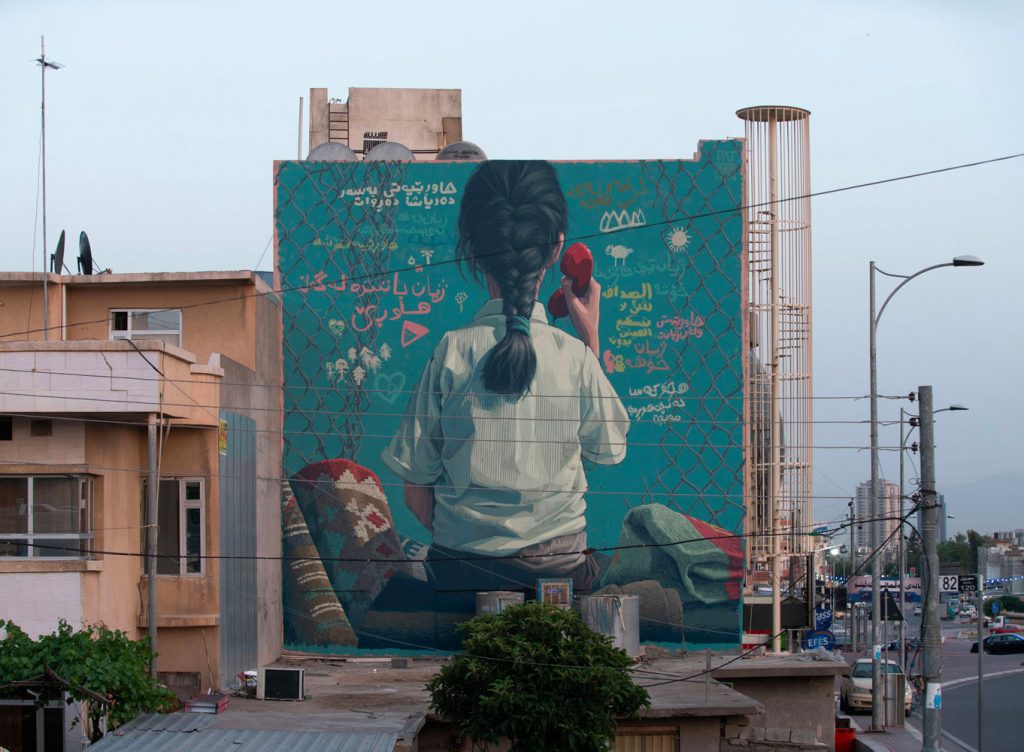
Detroit-based artist Pat Perry (previously) travels widely to create drawings, paintings, and murals inspired by the diverse cultures and landscapes of different parts of the world, often with an eye toward forgotten or marginalized people and places. Partnering with aptART and the Good Works Foundation, Perry’s most recent project took him to Maine and Iraq, where he collaboratively designed and painted a pair of murals with local schoolchildren. The two fifth grade classes, located over 5,600 miles apart in Biddeford and Slemani, got to know each other by exchanging videos and artwork. They then assisted Perry with painting their own messages on the new murals.
The resulting project, OPENING LINES, depicts a child in each mural holding a red telephone. Because their backs are turned, the viewer can imagine whether each subject is speaking or listening. Surrounding each figure are doodles and messages written in both English and Arabic by Perry’s young collaborators. Samantha Robison of aptART tells Colossal, “With cultural overlap across the globe unavoidable, the peril of stereotype can be lessened by individual, personal acquaintances across borders; a literal face rather than an idea of one. The most integral part of equality is providing platforms for people to speak, to create, to be listened to.”
The video below offers a glimpse behind the scenes of OPENING LINES. You can follow along with aptART’s youth programming on Instagram and explore more of Perry’s wide-ranging humanist work (including limited edition prints) on his website and Instagram.
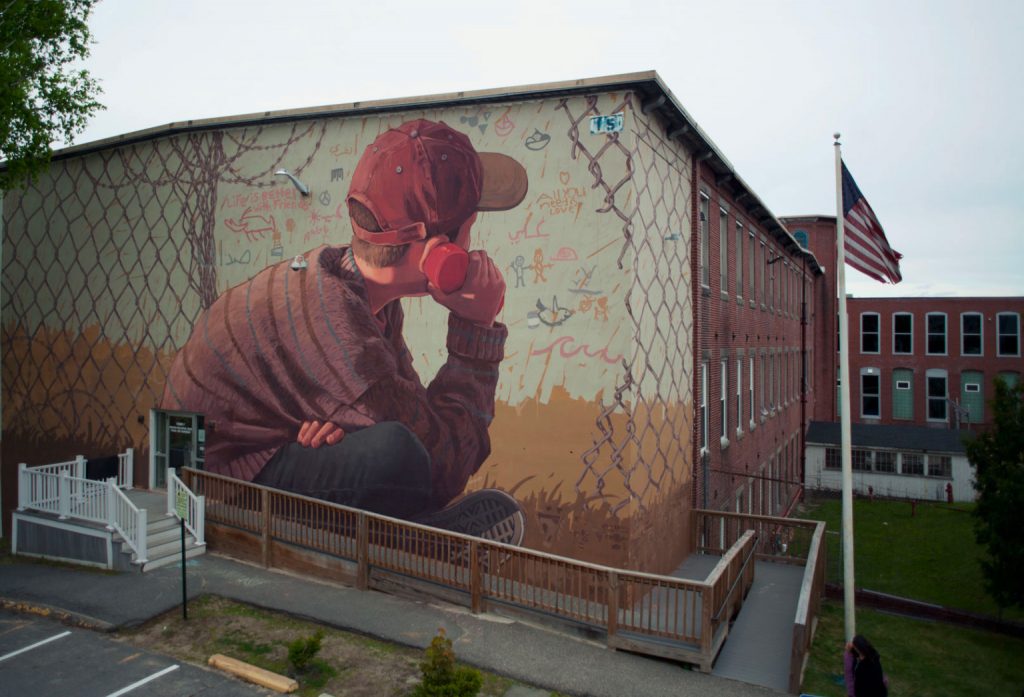
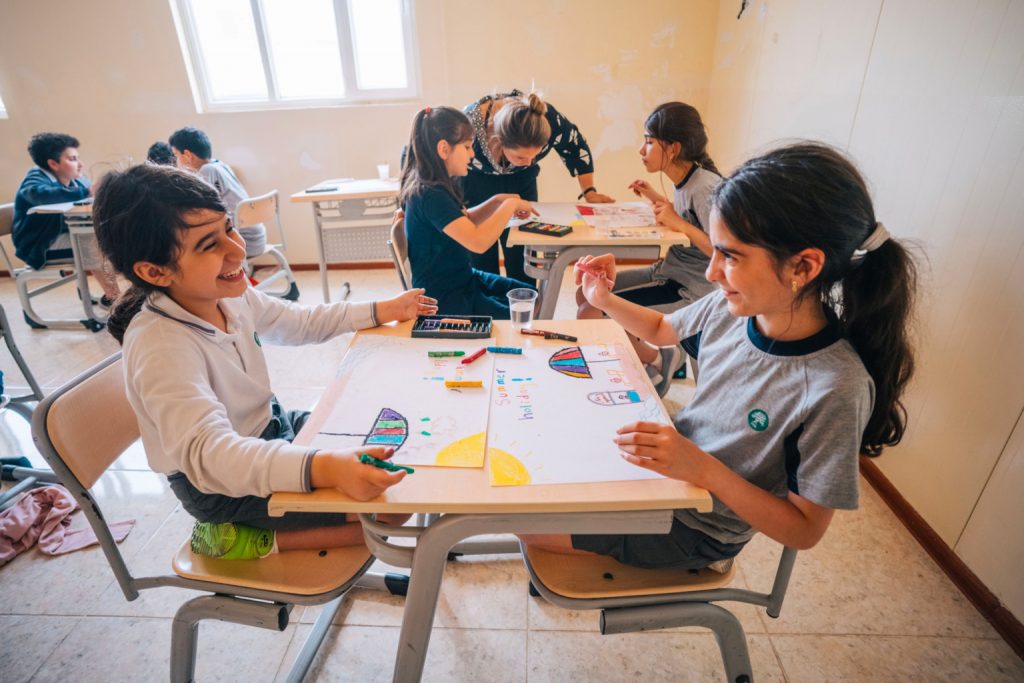
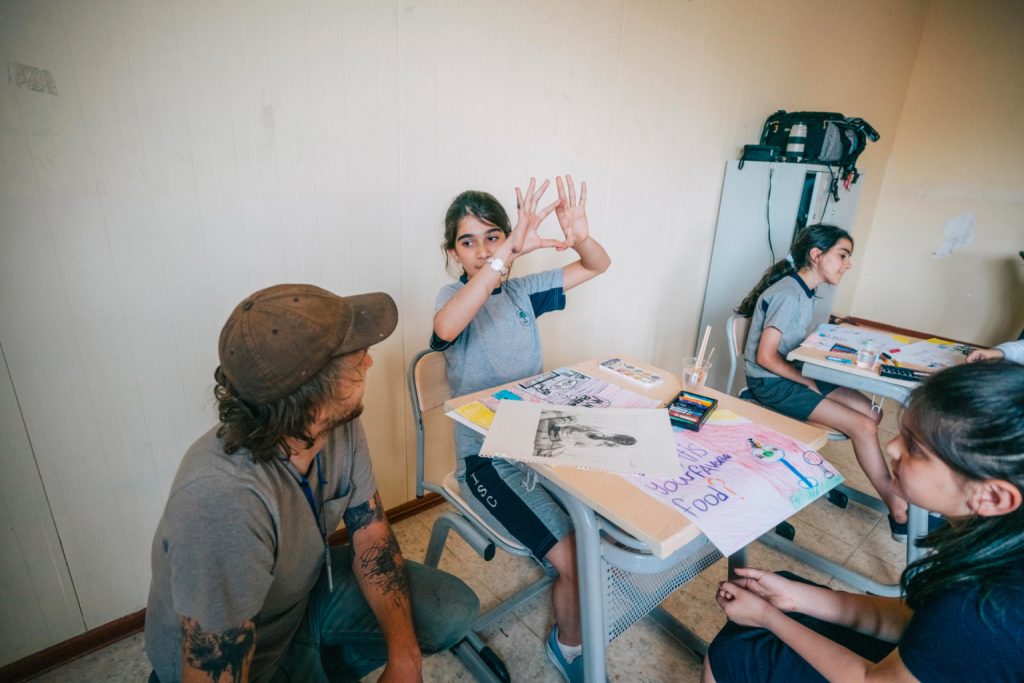


Opening Lines Pat Perry Published on Jul 17, 2019
Corresponding murals painted with groups of kids in Slemani, Iraq and Biddeford, Maine. An aptArts project in conjunction with One Blue Sky/Good Works Foundation. video: Emad Rashidi www.emadrashidi.com/ artwork: Pat Perry www.patperry.com/ www.aptart.org
Category People & Blogs
Black Swallowtail Butterfly and Ing’s Garden
Captured by Ing-On Vibulbhan-Watts on Wednesday, July 24, 2019
At the Backyard Garden, Downtown Newark, New Jersey
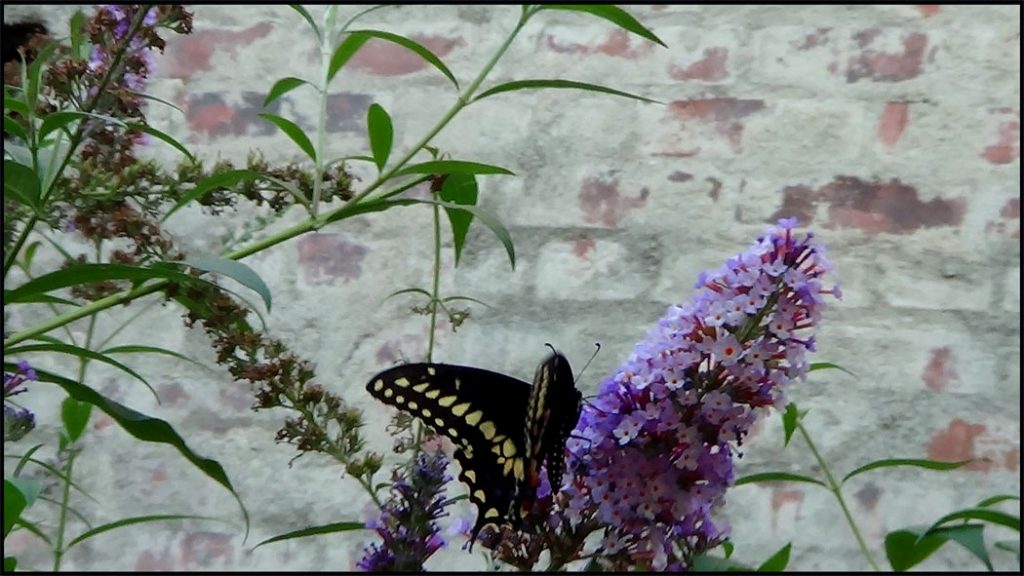

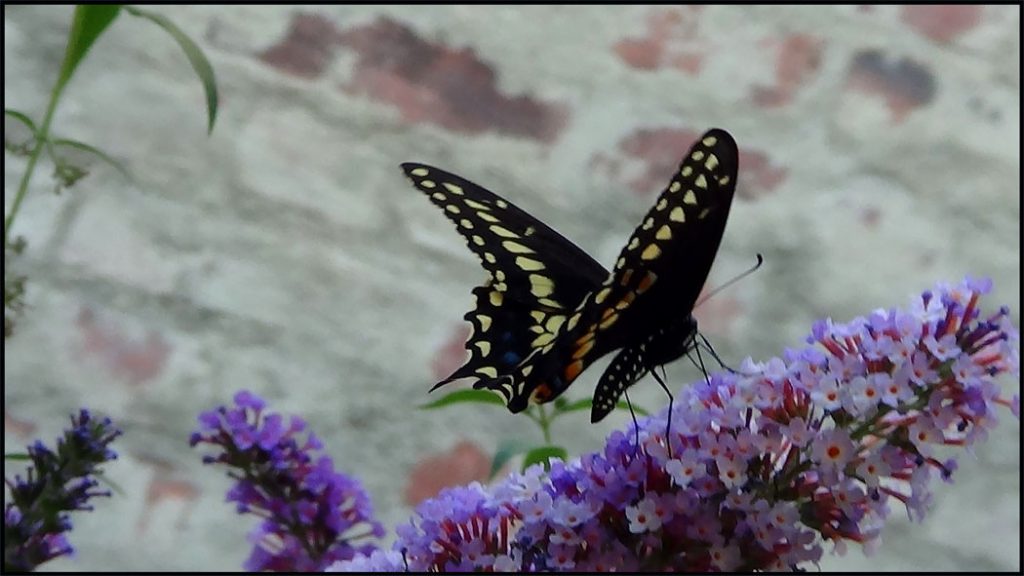
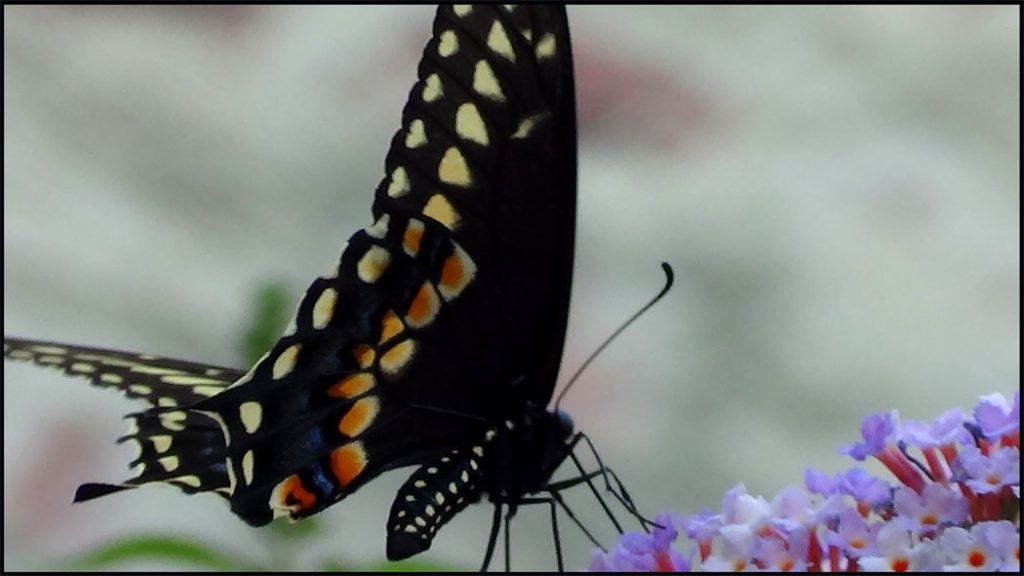
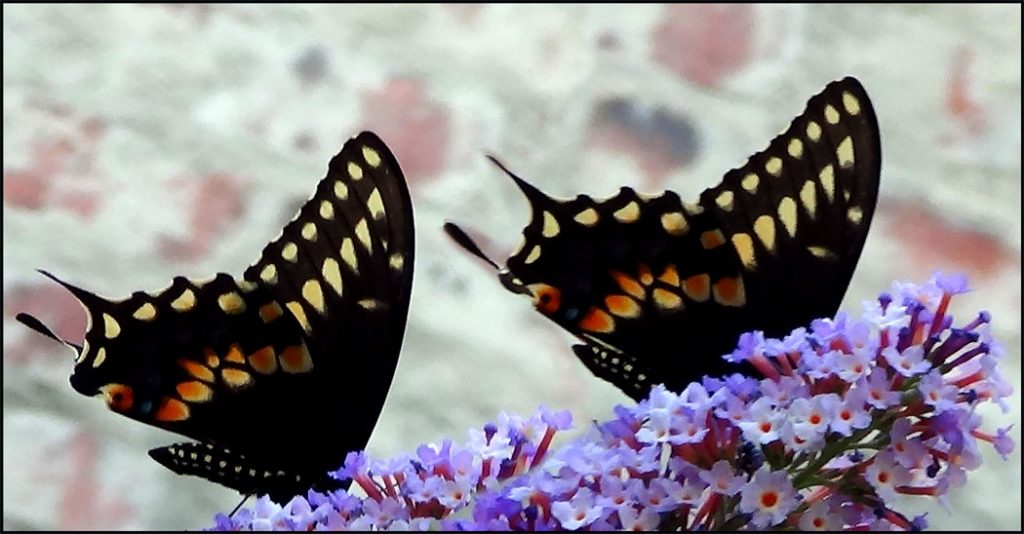
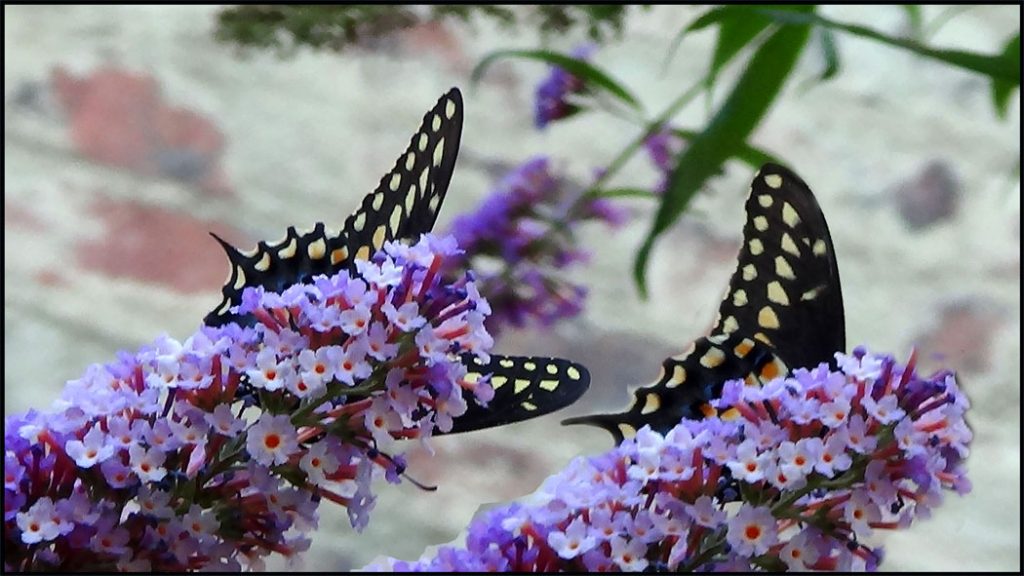
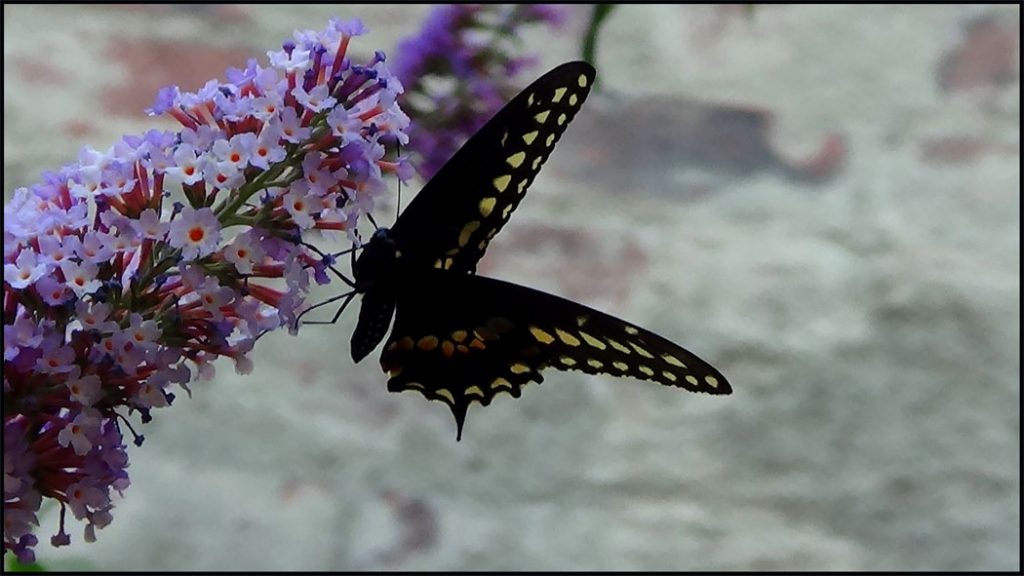
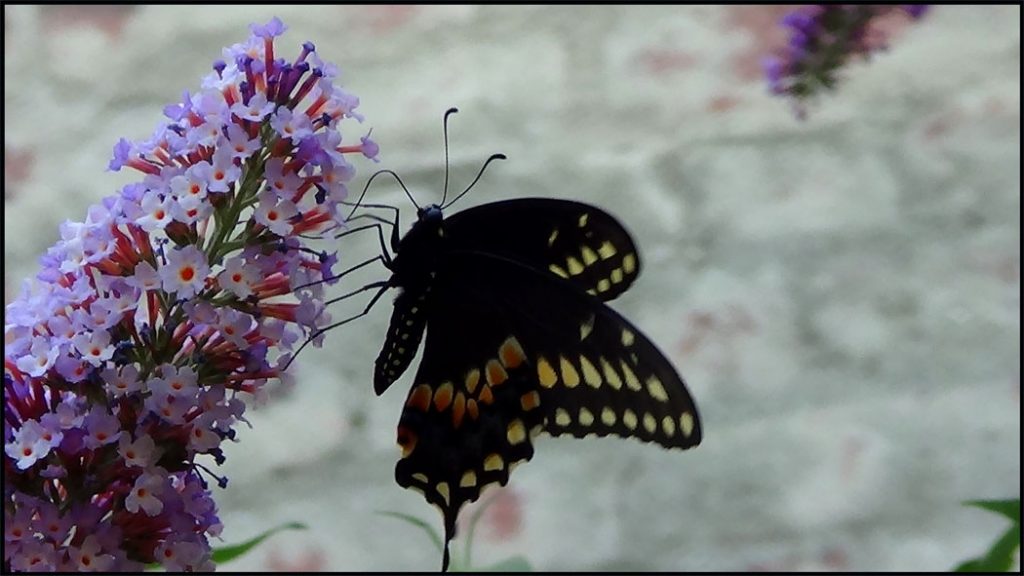
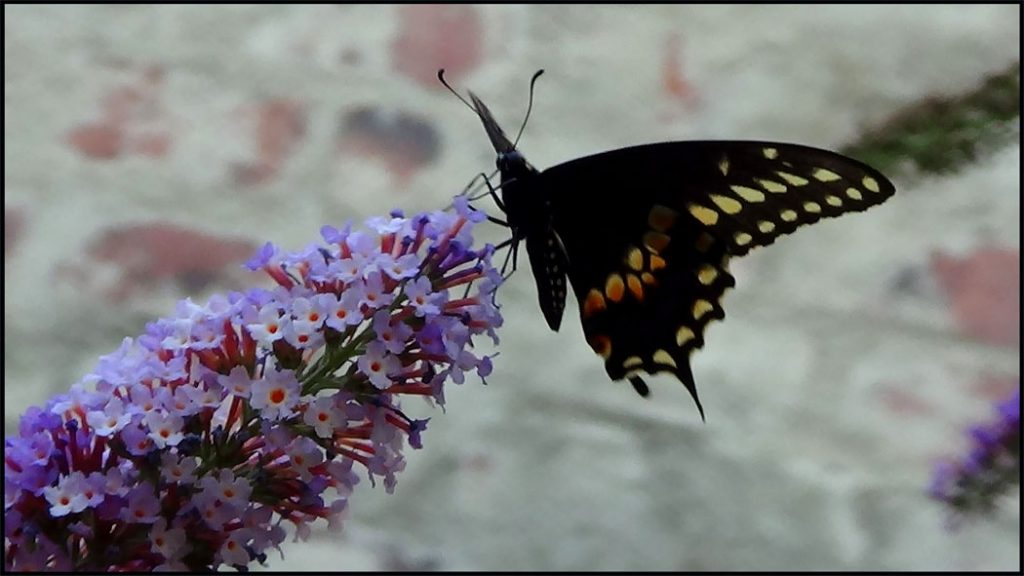

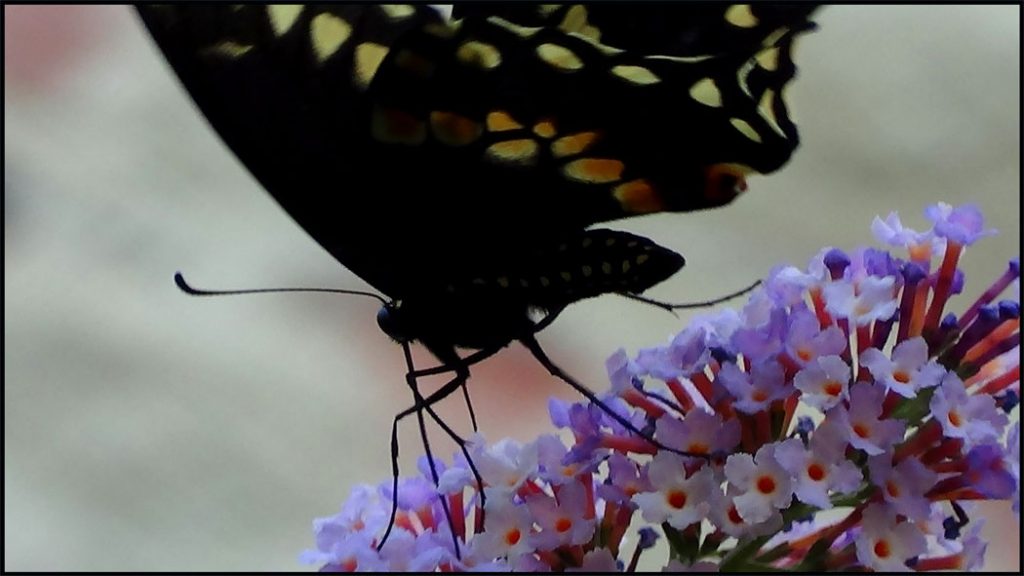
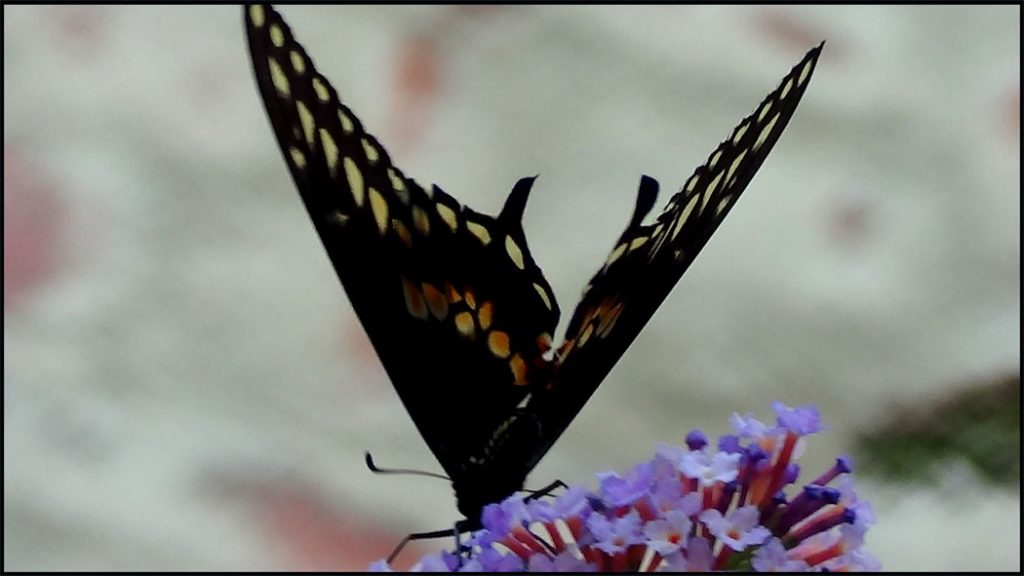
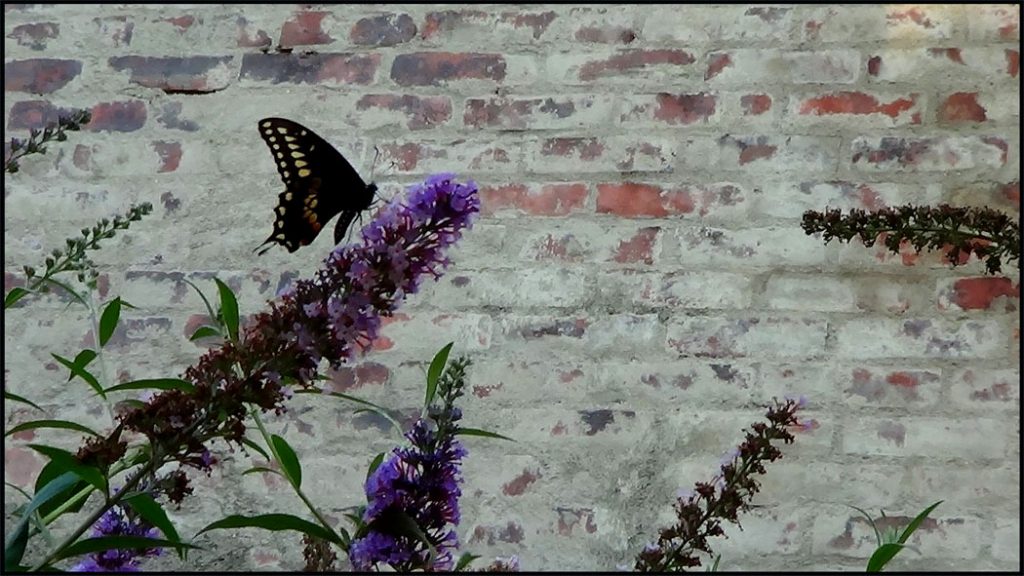
I usually see Yellow Swallowtail butterflies every year and hardly see any of Black Swallowtail butterflies, but this year I saw this Black Swallowtail butterfly before I saw the Yellow Swallowtail butterfly. I was lucky to capture the butterfly on my camcorder for only three minutes. Yellow Swallowtail butterflies usually stay to drink the nectar from the Butterfly bush flowers for about thirty minutes or more.
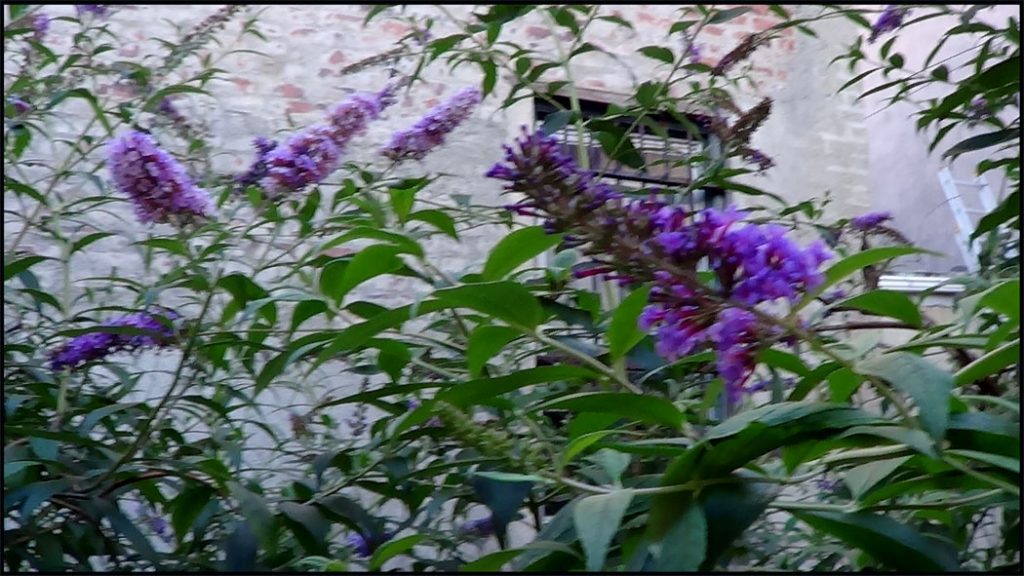

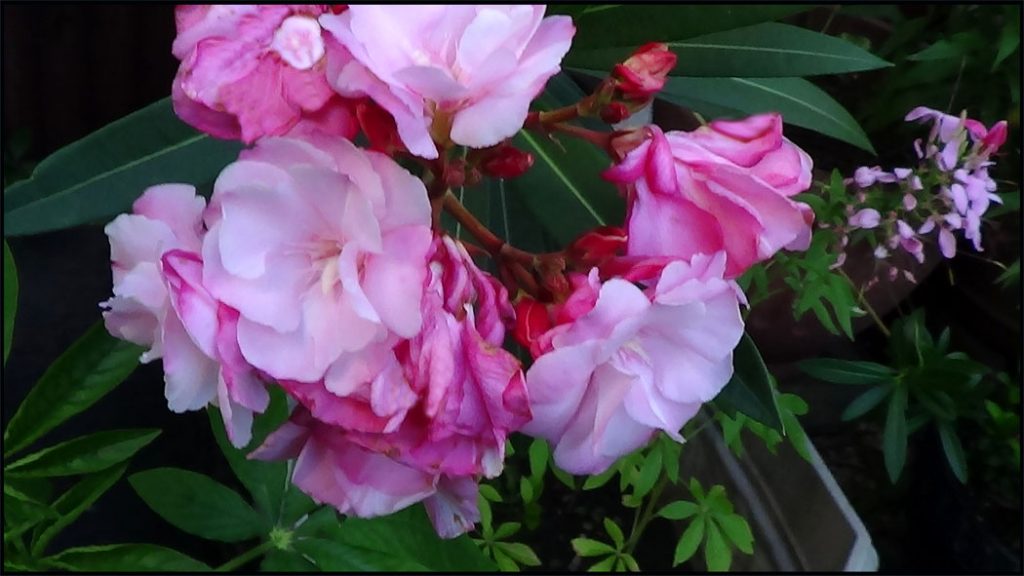
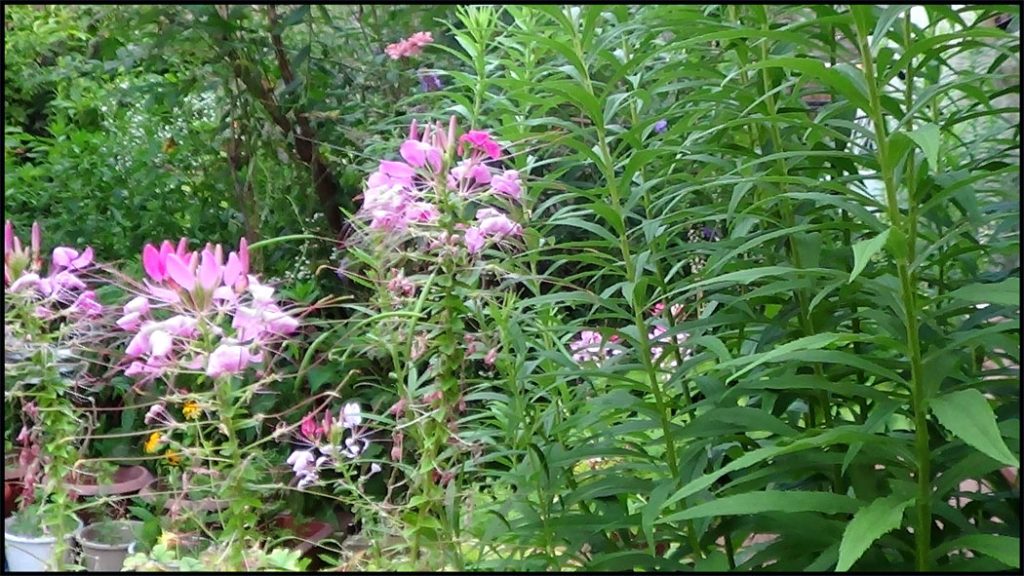
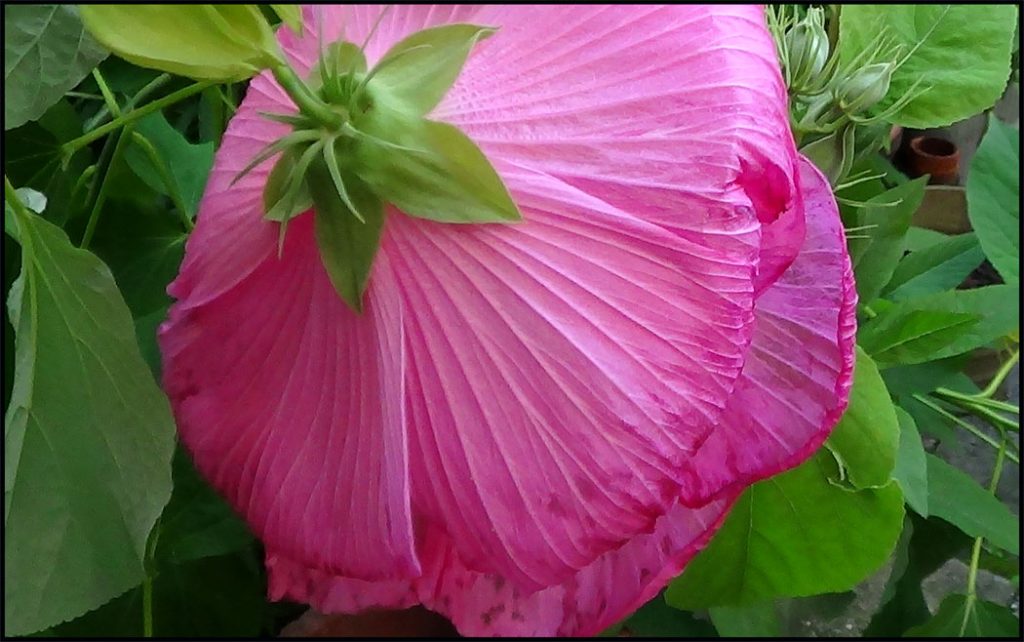
I enjoy all kinds of flowers but every year I wait for these large pink flowers. The flower diameter is about ten inches. The flower will last only one day. If the weather is very hot then by the afternoon the flower will wither away. This year we were very lucky to see a lot of flowers blossom.
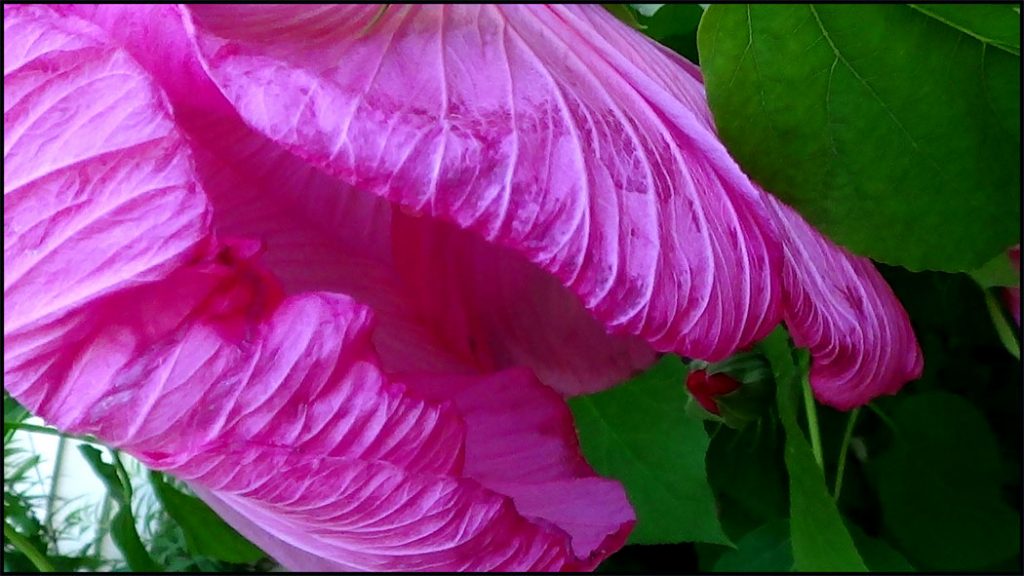
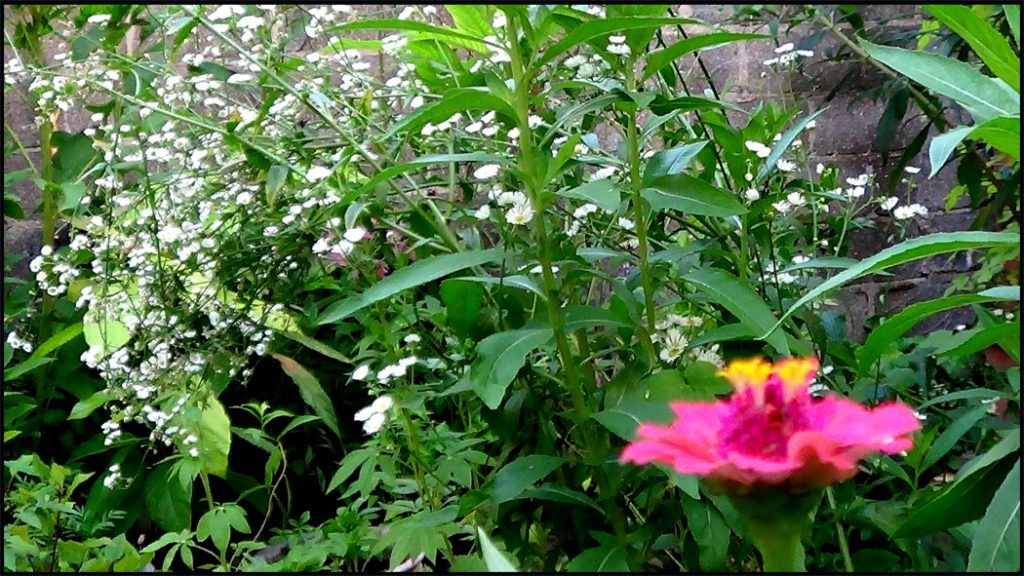
These white little daisies have a nice character of their own compared to the other larger flowers in the garden. They standout strongly and have a nice contrast to the green leaves around them.
Leave a Reply